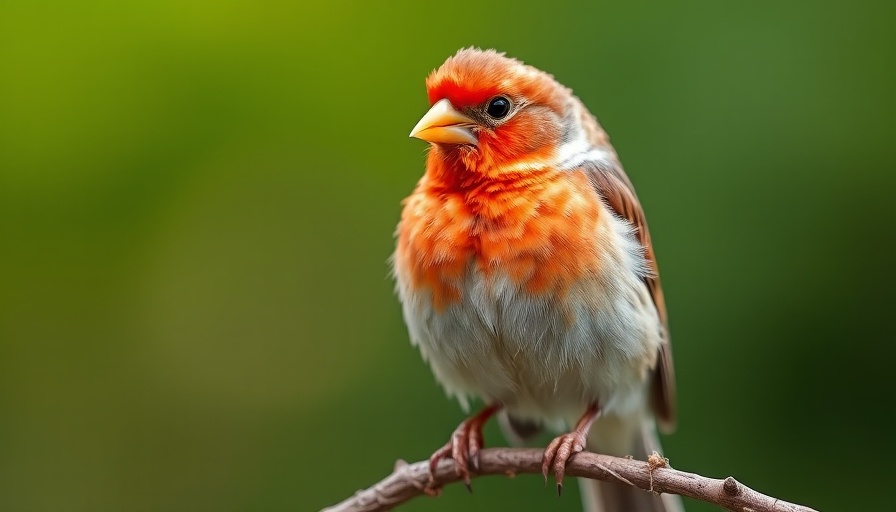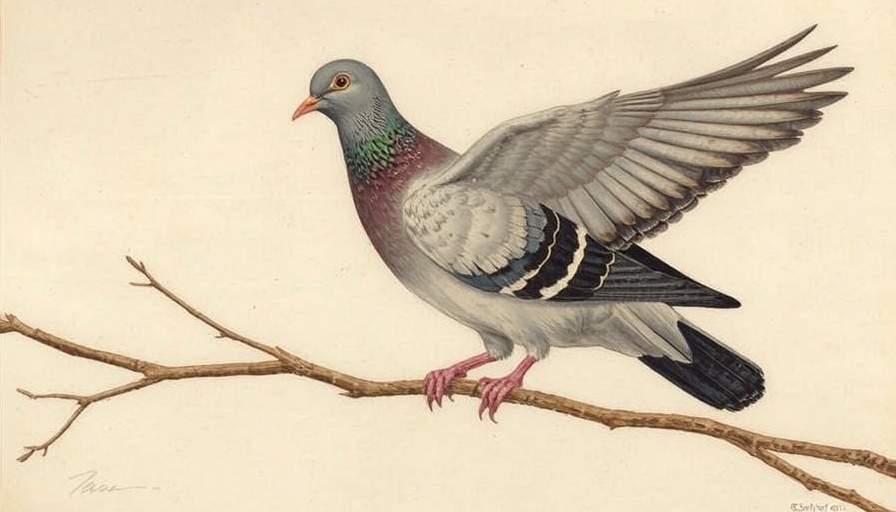
Understanding the Colorful Appeal of House Finches
The House Finch, a small yet vibrant bird found across North America, has a fascinating story to tell through its plumage. The male House Finch is notable for its bright red coloring, a trait derived from carotenoids found in its diet. Just like humans, who may prefer certain foods for their health benefits, these birds leverage nutrition to boost their reproductive success.
The Science Behind Coloration
Studies show that the male House Finch, which consumes a diet rich in fruits containing carotenoids, exhibits brighter plumage. This vibrant red, produced by the conversion of yellow dietary carotenoids, plays a significant role in mate selection. Females often prefer these brighter males, as their coloration can signal overall health and vitality. It's not merely decorative; the hues represent a bird's nutritional status which indicates better reproductive capabilities and stronger offspring.
The Role of Ornamental Traits
Ornamental traits in animals serve vital functions beyond mere aesthetics. Researchers, like Dr. Geoffrey Hill from Auburn University, emphasize that these colorful displays can provide insight into an individual bird's fitness. In House Finches, not only do brighter reds attract mates, but they also suggest the male's ability to thrive in the wild, offering survival advantages that enhance familial success.
The Consequence of Good Nutrition
For House Finches, a well-rounded diet translates directly into more than just eye-catching plumage. The correlation between diet quality and reproductive success means healthier birds produce a higher number of successful offspring, which in turn supports the long-term vitality of the species. A single pair of House Finches can produce numerous broods each season, reflecting the significance of diet in their reproductive strategy.
Connecting Nature and Humanity
The vibrant lives of House Finches serve as a reminder that our choices extend beyond ourselves. Good nutrition matters in nature's ongoing cycle. Whether it's the brilliant red of a male House Finch or the health of our own families, the implications of dietary choices resonate deeply. By supporting natural habitats and local wildlife, we, too, can create vibrant environments where both people and ecosystems flourish.
Ultimately, the tale of the House Finch underscores a fundamental truth in nature: we are truly shaped by what we consume. As we reflect on their nutrient-driven success, we are encouraged to consider our own diets and the impact they have, not only on our health but on the community and ecosystems around us.
 Add Row
Add Row  Add
Add 




Write A Comment